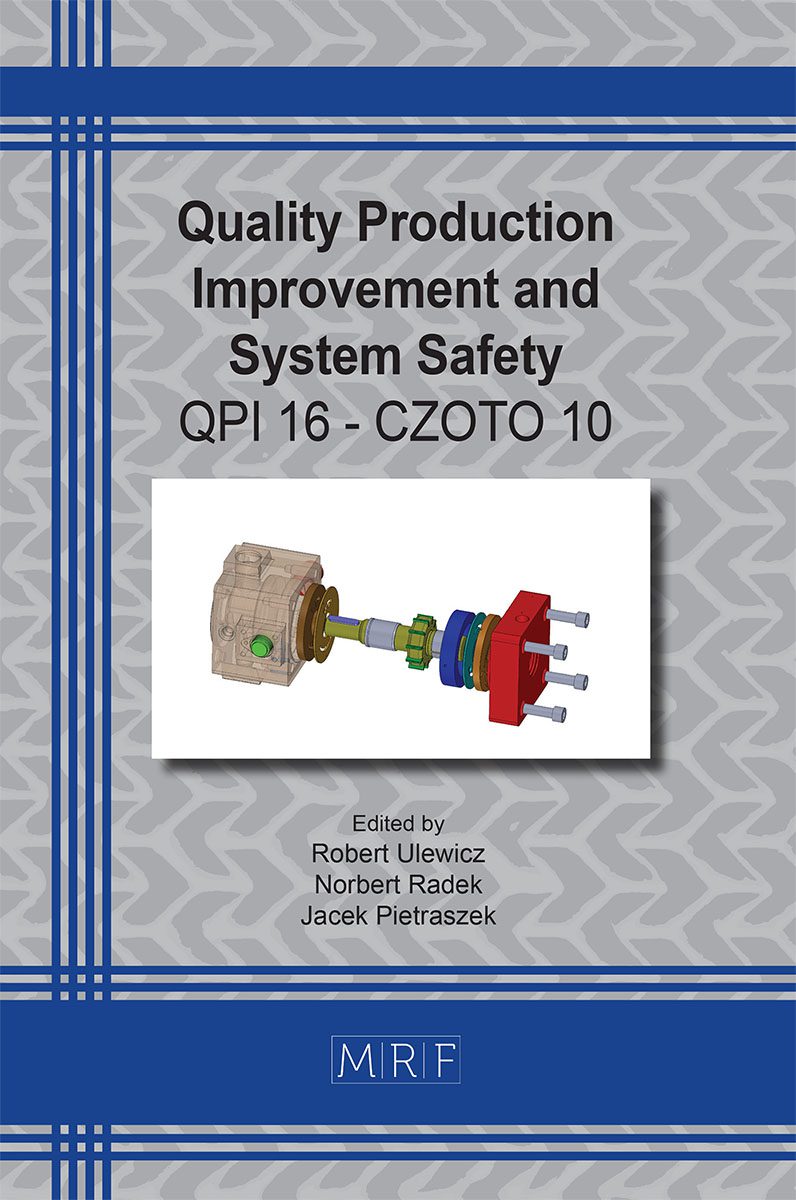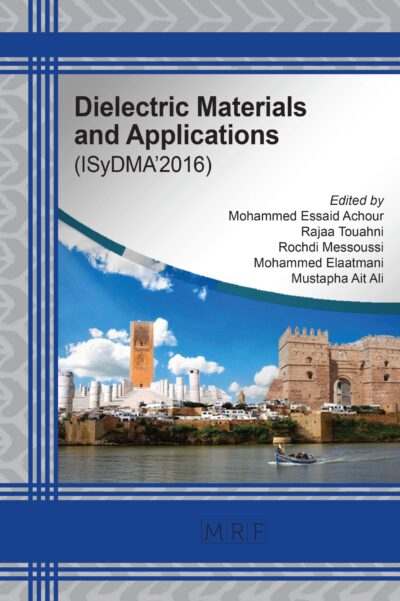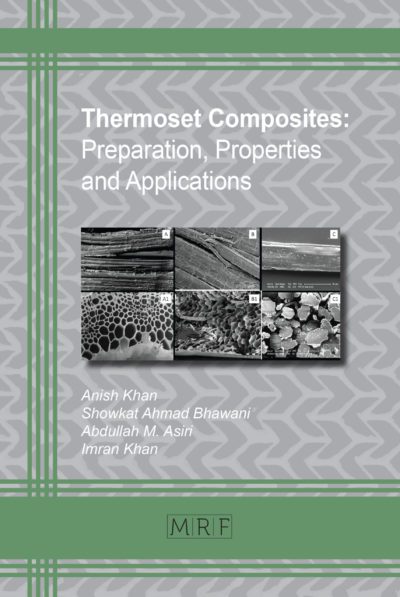Microstructural Analysis of Wound Composites with Considerations on the Fiber Winding Force
KRYSIAK Piotr
download PDFAbstract. The paper concerns issues related to the fabrication and microstructural analysis of carbon and glass fiber-reinforced epoxy composites. For the purposes of the tests, ring samples of carbon fiber and glass fiber were fabricated, each sample being made of the same amount of material. The rings were produced by circumferentially wrapping fibers onto a rigid core. During winding, the fiber tension was changed for each sample to investigate whether the amount and distribution of fibers in the composite depending on the force applied. The applied tension forces ranged from 18 to 138 N. In the next stage of tests, small fragments were cut out of the rings, cutting perpendicularly to the arrangement of fiber bundles. The cut elements were then embedded in epoxy resin. The microsections prepared in this were ground using a grinding disc with a gradation of 80 to 4000 and then polished, washed and dried. After these treatments, microscopic photos of the tested surfaces were taken. Observations were made using a NEOPHOT 32 microscope with an integrated camera and a KEYENCE VHX microscope. The volume fraction of voids and discontinuities in the matrix, as well as the volume fraction of fibers, were determined by measuring the percentage of the surface areas occupied by the appropriate components of the composite. On each cross-section of individual samples, photographs were taken in three planes parallel to the composite layers and three planes perpendicular to the fibers in the matrix system. The image analysis method was used for verification, in which it is assumed that the assessment of fiber distribution in a two-dimensional section is representative of its volumetric distribution. This method is mainly used to analyze the distribution of fibers with a constant cross-section. The most important conclusions from the conducted analyses allow the authors to state that in both composites the fibers in the matrix are highly packed and that there was no significant and noticeable effect of fiber tension during winding on the “packing” density of fibers in the composites.
Keywords
Resin, Carbon Fiber, Glass Fiber, Composite, Microstructural Analysis
Published online 9/1/2023, 10 pages
Copyright © 2023 by the author(s)
Published under license by Materials Research Forum LLC., Millersville PA, USA
Citation: KRYSIAK Piotr, Microstructural Analysis of Wound Composites with Considerations on the Fiber Winding Force, Materials Research Proceedings, Vol. 34, pp 43-52, 2023
DOI: https://doi.org/10.21741/9781644902691-6
The article was published as article 6 of the book Quality Production Improvement and System Safety
![]() Content from this work may be used under the terms of the Creative Commons Attribution 3.0 license. Any further distribution of this work must maintain attribution to the author(s) and the title of the work, journal citation and DOI.
Content from this work may be used under the terms of the Creative Commons Attribution 3.0 license. Any further distribution of this work must maintain attribution to the author(s) and the title of the work, journal citation and DOI.
References
[1] A. Błachut, P. Krysiak. Modelowanie w mikro- i makroskali nawijanej rury kompozytowej, Modelowanie Inżynierskie 35 (2018) 5-11.
[2] A. Błachut, P. Krysiak. Analysis of mechanical properties of epoxy resins used in composite high-pressure tank. Int. J. Eng. Sci. 4 (2016) 50-55.
[3] Composite Materials Handbook. Polymer matrix composites guidelines for characterization of structural materials, vol. 1, Department of Defense, Washington DC, 2002.
[4] H. Dąbrowski. Wytrzymałość polimerowych kompozytów włóknistych. Oficyna Wydawnicza Politechniki Wrocławskiej, Wrocław, 2002.
[5] W. Królikowski. Polimerowe kompozyty konstrukcyjne. PWN, Warszawa, 2012.
[6] P. Krysiak, A. Błachut, J. Kaleta. Theoretical and Experimental Analysis of Inter-Layer Stresses in Filament-Wound Cylindrical Composite Structures. Materials 14 (2021) art. 7037. https://doi.org/10.3390/ma14227037
[7] P. Krysiak, J. Kaleta, P. Gąsior, A. Błachut, R. Rybczyński. Identification of strains in a multilayer composite pipe. J. Sci. Mil. Acad. Land Forces 49 (2017) 272-282. https://doi.org/10.5604/01.3001.0010.7233
[8] P. Krysiak, R. Owczarek, W. Błażejewski, A. Błachut. Strength Testing and Ring Stiffness Testing of Underground Composite Pressure Pipes”. Mater. Res. Proc. 17 (2020) 191-202. https://doi.org/10.21741/9781644901038-29
[9] Krosglass S.A. website. [online]. 2023. [viewed: 2023-01-31]. Available from: https://www.krosglass.pl
[10] Toho Tenax Europe website. [online]. 2023. [viewed: 2023-01-31]. Available from: https://www.chemeurope.com/
[11] Fatol Kunststoffen website. [online]. 2023. [viewed: 2023-01-31]. Available from: https://www.fatol.nl
[12] J. Korzekwa et al. Tribological behaviour of Al2O3/inorganic fullerene-like WS2 composite layer sliding against plastic, Int. J. Surf. Sci. Eng. 10 (2016) 570-584. https://doi.org/10.1504/IJSURFSE.2016.081035
[13] A. Gadek-Moszczak, P. Matusiewicz. Polish stereology – A historical review, Image Analysis and Stereology 36 (2017) 207-221. https://doi.org/10.5566/ias.1808
[14] J. Pietraszek, A. Szczotok, N. Radek. The fixed-effects analysis of the relation between SDAS and carbides for the airfoil blade traces. Arch. Metall. Mater. 62 (2017) 235-239. https://doi.org/10.1515/amm-2017-0035
[15] N. Radek et al. The impact of laser welding parameters on the mechanical properties of the weld, AIP Conf. Proc. 2017 (2018) art.20025. https://doi.org/10.1063/1.5056288
[16] B. Jasiewicz et al. Inter-observer and intra-observer reliability in the radiographic measurements of paediatric forefoot alignment, Foot Ankle Surg. 27 (2021) 371-376. https://doi.org/10.1016/j.fas.2020.04.015
[17] J. Pietraszek et al. The parametric RSM model with higher order terms for the meat tumbler machine process, Solid State Phenom. 235 (2015) 37-44. https://doi.org/10.4028/www.scientific.net/SSP.235.37
[18] J. Pietraszek et al. Challenges for the DOE methodology related to the introduction of Industry 4.0. Prod. Eng. Arch. 26 (2020) 190-194. https://doi.org/10.30657/pea.2020.26.33
[19] J. Pietraszek et al. Factorial approach to assessment of GPU computational efficiency in surrogate models, Adv. Mater. Res. 874 (2014) 157-162. https://doi.org/10.4028/www.scientific.net/AMR.874.157
[20] R. Dwornicka, J. Pietraszek. The outline of the expert system for the design of experiment, Prod. Eng. Arch. 20 (2018) 43-48. https://doi.org/10.30657/pea.2018.20.09
[21] J. Pietraszek. The modified sequential-binary approach for fuzzy operations on correlated assessments, LNAI 7894 (2013) 353-364. https://doi.org/10.1007/978-3-642-38658-9_32
[22] J. Pietraszek et al. Non-parametric assessment of the uncertainty in the analysis of the airfoil blade traces, METAL 2017 – 26th Int. Conf. Metall. Mater. (2017) 1412-1418. ISBN 978-8087294796
[23] J. Pietraszek et al. The non-parametric approach to the quantification of the uncertainty in the design of experiments modelling, UNCECOMP 2017 Proc. 2nd Int. Conf. Uncert. Quant. Comput. Sci. Eng. (2017) 598-604. https://doi.org/10.7712/120217.5395.17225
[24] N. Radek et al. Microstructure and tribological properties of DLC coatings, Mater. Res. Proc. 17 (2020) 171-176. https://doi.org/10.21741/9781644901038-26














